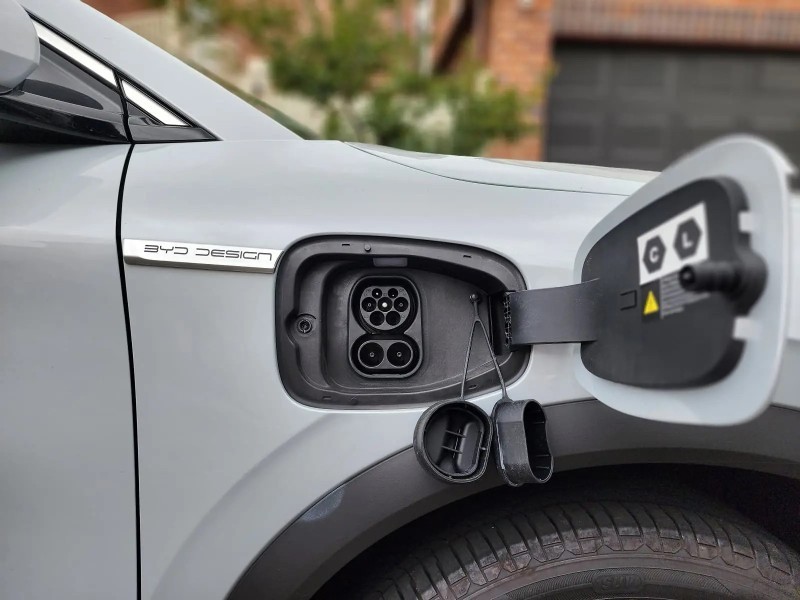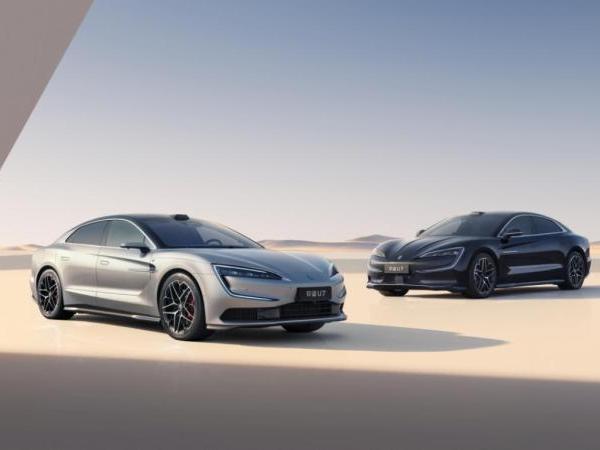The Rise of Graphene Batteries: A Potential Game Changer
 JamesFeb 23, 2024, 09:25 PM
JamesFeb 23, 2024, 09:25 PM
Graphene battery, a new type of energy battery developed by utilizing the characteristics of rapid and large-scale shuttle movement of lithium ions between the surface of graphene and the electrode.
Prospects for the development of graphene batteries
The success of the experimental stage of the new graphene battery will undoubtedly become a new development point in the battery industry. Battery technology is the biggest threshold for the promotion and development of electric vehicles. The battery industry is currently facing a bottleneck in the development of lead-acid batteries and traditional lithium batteries. After the successful development of graphene energy storage devices, if they can be mass-produced, it will bring new changes to the battery industry and even the electric vehicle industry.
Because of its unique characteristics, graphene is called the "magical material", and scientists even predict that it will "completely change the 21st century". Professor Colin Bailey, Vice-Chancellor of the University of Manchester, said: "Graphene has the potential to completely change a huge range of applications, from smartphones and ultra-high-speed broadband to drug delivery and computer chips."
Recently, researchers at the University of California, Los Angeles, have developed a graphene-based miniature super capacitor. This capacitor is not only small in shape but also charges 1000 times faster than ordinary batteries. It can charge mobile phones and even cars in a few seconds, and can be used to manufacture small devices. Graphene battery.
The breakthrough in miniaturized graphene super capacitor technology can be said to have brought revolutionary development to batteries. The main method of manufacturing miniature capacitors is flat printing technology, which requires a lot of manpower and cost, hindering the commercial application of the product. But with a common DVD burner, even at home, you can create more than 100 micro-graphene super capacitors on a CD in 30 minutes using cheap materials.
Seeing the application prospects of graphene, many countries have established graphene-related technology research and development centers in an attempt to commercialize graphene and thereby obtain potential application patents in industrial, technical, and electronic-related fields. The European Commission has identified graphene as a "future emerging flagship technology project", established a special research and development plan, and allocated 1 billion euros in funds within the next 10 years. The British government also invested in the establishment of the National Graphene Research Institute (NGI), striving to make this material enter the production line and market in the next few decades.
China also has a unique advantage in graphene research. From the perspective of production, as the raw material for the production of graphene, graphite is abundant in storage in our country and is low in price. In addition, batch production and large-size production are the main factors hindering the large-scale commercial use of graphene. A 15-inch single-layer graphene, the country's first, has been successfully manufactured using chemical vapor deposition, and graphene transparent electrodes have been successfully applied to resistive touch screens, creating a 7-inch graphene touch screen.
Researchers from the Chongqing Institute of Green and Intelligent Technology, Chinese Academy of Sciences, are showing the super light transmission and flexibility of single-layer graphene products.
Because of graphene's unimaginable conductivity, the concept of a graphene battery has become a lifesaver for breaking through battery technology bottlenecks. Especially in the domestic electric vehicle industry, any technological breakthrough is linked to graphene batteries.
With the deepening of research, the continuous overcoming of technical problems, and the continuous expansion of the application range, it is believed that the era of graphene devices is not far off, and we can also look forward to what kind of surprise this "magical material of the 21st century" will bring.
"Graphene battery or revolution: Charge for 10 minutes to run 1000 kilometers" report: Spain's Graphenano company (a company that produces graphene on an industrial scale) cooperates with the University of Cordoba in Spain to study the first graphene polymer Material battery, its storage capacity is three times that of the best product on the market, and the electric vehicle powered by this battery can travel up to 1000 kilometers, and its charging time is less than 8 minutes. Although this battery has various excellent properties, its cost is not high. Relevant persons in charge of Graphenano company stated that the cost of this battery will be 77% lower than that of lithium batteries and is completely within the reach of consumers. In addition, in the field of automotive fuel cells, graphene is also expected to bring revolutionary progress.
The breakthrough of Huawei's graphene-based battery mainly comes from three aspects. Firstly, special additives are added to the electrolyte to remove trace water and avoid high-temperature decomposition of the electrolyte. Secondly, the positive electrode of the battery selects modified large single crystal ternary materials to improve the thermal stability of the material; In addition, because of the use of new material graphene, it can achieve efficient heat dissipation between the lithium-ion battery and the environment.
Principle of graphene batteries
Testing of graphene batteries that charge themselves using environmental heat.
The experimental circuit made includes LEDs, which are connected to the graphene tape with electrical wires. They just put the graphene in a solution of copper chloride for observation. The LED lights up. In fact, they need 6 graphene circuits to form a series, so they can generate the required 2V and make the LED light up to get this picture.
Xu Zihan and her colleagues said that what happened here is that copper ions with a double positive charge move at a speed of about 300 meters per second through the solution due to the thermal energy of the solution at room temperature. When the ions crash into the graphene tape, the collision will generate enough energy to cause the displaced electrons to leave the graphene. There are two options for electrons: they can leave the graphene tape and combine with copper ions, or they can go through graphene and enter the circuit.
As it turns out, the flow of electrons in graphene is faster than their speed through the solution, so electrons naturally choose the path through the circuit. This is the point that lights up the LED, "The released electrons are more inclined to pass through the graphene surface rather than enter the electrolyte. This is how the device generates voltage," Xu Zihan said.
Therefore, the energy generated by this device comes from the heat of the surrounding environment. They can increase the current by just heating up the solution or using ultrasound to speed up the copper ions. Relying solely on the surrounding heat, their graphene batteries can run for 20 days. But there is also an important question mark. Another assumption is that some kind of chemical reaction generates the current, just like a normal battery.
However, Xu Zihan and her colleagues said that they ruled this out because they conducted several sets of control experiments. However, these are introduced in some supplementary materials, and they don't seem to have been put on the arXiv website. They need to make it public before others make serious claims. At face value, this looks like a very significant achievement. Others have also produced currents in graphene, but they just let water flow over it, so it’s not really surprising that moving ions can produce such an effect. This heralds clean, green batteries that are driven only by environmental heat. Xu Zihan and her colleagues said: "This represents a huge breakthrough in the study of self-driving technology."
Influence on the capacity of a graphene battery
Looking at the charging and discharging process of the battery from a microscopic perspective, it is actually a process of "inlaying" and "detaching" the cations in the electrode. So, the more holes in the electrode material, the quicker this process will be. From a macro perspective, it is manifested as the speed of the battery's charging and discharging is faster. The microscopic structure of graphene is a network structure composed of carbon atoms.
Because of its extreme thinness (only one atomic layer thick), the restriction of cation movement is very small. At the same time, because of its network structure, the electrode material made of graphene also has sufficient holes. From this point of view, graphene is undoubtedly a very ideal electrode material. The research of researchers at the Rensselaer Polytechnic Institute (RPI) in New York State shows that the charging and discharging speed of batteries that use graphene as the anode material will be 10 times faster than that of lithium-ion batteries.
If any infringement occurs, please contact us for deletion
Trending News

Toyota Tundra Owner Achieves the Second Million-Mile Milestone
[PCauto] The mileage often measures the quality and durability of a car, and Victor Sheppard and his two Toyota Tundra pickups have set a staggering record.With Victor Sheppard's dedication and careful maintenance of the Toyota Tundra, he successfully drove two different Tundra pickups over 1 million miles (approximately 1,609,340 kilometers).In 2007, Sheppard bought a brand new Toyota Tundra CrewMax. Over the next nine years, as a contractor, he worked across the United States, from Louisiana t

BYD Plans to Promote 1000V High Voltage Super Charging Stations and Its Models on a Large Scale
【PCauto】Recently, the news that BYD plans to massively implement a 1000V high-voltage supercharging platform has attracted widespread attention. It is reported that this platform will be launched in the middle of March this year and supports super-fast charging above 5C. After its release, it will quickly be popularized to its own models and large-scale construction of 1000V supercharging stations.This move will undoubtedly set off a wave in the new energy vehicle market. Let's delve into the te

XPENG G9 is about to be launched in China, bringing 66 upgrades in features
【PCauto】XPENG has recently announced that the 2025 XPENG G9 will soon be launched in China. Although the official did not announce the time and price, the success of XPENG G6 and X9 has rekindled expectations for the once-failed G9 by XPENG. In terms of appearance, the G9 continues the X-BOT FACE 3.0 design language, with a closed grill at the front paired with split-style headlights on both sides, new two-tone collision colors and all-black body styles, with a petal-style wheel hub. Combining

BYD YANGWANG U7 Launches with World's First Suspension Charging Tech
[PCauto] On March 27, BYD YANGWANG U7 was launched, with two power versions of pure electric and plug-in hybrid, a total of four models. YANGWANG U7 EV Five-seater Luxury Edition, priced at about 292.85 million baht/RM38.31 YANGWANG U7 EV Four-seater Flagship Edition, priced at about 330.04 million baht/RM43.19 YANGWANG U7 PHEV Five-seater Luxury Edition, priced at about 292.85 million baht/RM38.31 YANGWANG U7 PHEV Four-seater Flagship Edition, priced at about 330.04 million bah

HAVAL H6: A Balanced Performer and a Reliable Choice for Family SUVs
Price of HAVAL H6HAVAL H6 has a total of 1 submodel.• 2024 HAVAL H6 HEV priced at RM 139,800Driving experience of the HAVAL H6As for the power, the HAVAL H6 is equipped with a 1.5L 4-cylinder turbocharging source, delivering a maximum power output of 110 kW and a peak torque of 230 N·M, with maximum torque available at 1500-4000 rpm. The power is transmitted to the Front Wheel via an AT transmission, achieving a combined fuel consumption of 5.8 L/100km. This p
Popular Cars
Car Compare


